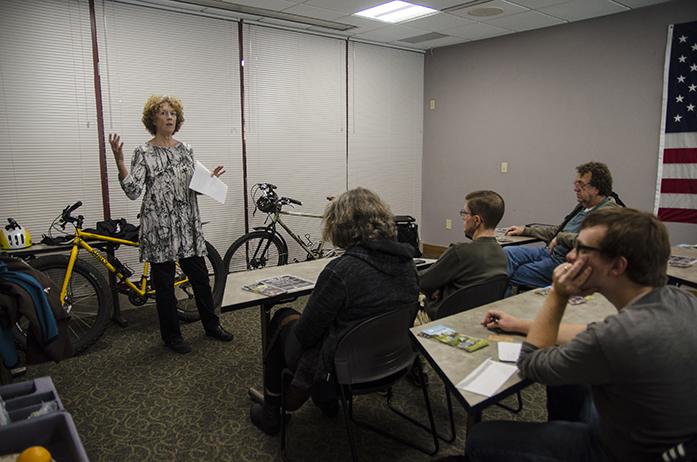Winter biking can be tricky, but with these tips from experienced cyclists, people can keep sailing along comfortably and safely well into the colder months.
By Isabella Senno
The weather outside is frightful, but biking can still be delightful.
Winter cycling can often seem daunting, but biking can remain a comfortable and enjoyable activity year-round. The main issues that cyclists need to watch out for are low temperatures, road conditions, and rider visibility.
“Top tip No. 1 is don’t stop just because it gets cold,” said Michael Chamberlain, owner of The Broken Spoke. “Stick with it because depending on how you are dressed, you will tell if you are underdressed or overdressed, and then you can accommodate your clothing for future temperature ranges.”
Cyclists should judge not only the weather and road conditions but also their own riding ability when suiting up. Anne Duggan, the president of Think Bicycles of Johnson County, said riders should dress so that they are a little bit cool when they first go outside.
“Layers, lots of layers, because when you first get outside, you’ll be pretty cold, but once you start getting more body heat, you’ll likely want to take off some layers,” University of Iowa freshman Libby Chelsvig said. “I typically wear a pair of leggings, then a pair of bike leggings on top, and then I wear a thermal top, then a sweatshirt and a coat on top.”
Any snowfall can be followed by an accumulation of debris, slush and compacted bits of ice and snow in the bike lanes on the side of roads.
“Fenders work wonders and are pretty much a necessity to keep all of the winter slush and muck and snow off of both you and your bicycle,” Chamberlain said. “The bike is the biggest benefactor because it protects the internal frame and components from getting corroded, and the rider benefits from it because it keeps all that from getting thrown onto your back.”
Road conditions can vary in the winter because of this collected debris, as well as sand and salt being thrown down. Cyclists should ride with caution and more slowly than they would if the roads were clear.
“I typically don’t go as fast, especially down hills and corners, and I put my feet down to skid more,” Chelsvig said. “I like to wear shoes that have a good traction, because then if I’m going too fast I can just put my foot down and stop a lot easier.”
It can also be more difficult for winter cyclists to be visible to others, because of less daylight, glare from snow, and inclement weather. Duggan recommended that cyclists wear brighter colors and add lights to their bikes in order to increase their visibility.
“Have a daytime running headlight when it’s glaring and have it on flash so motorists are more likely to see it,” Chamberlain said. “If you have good lights, that’s going to be the best thing over any kind of reflective material, but anything helps.”







